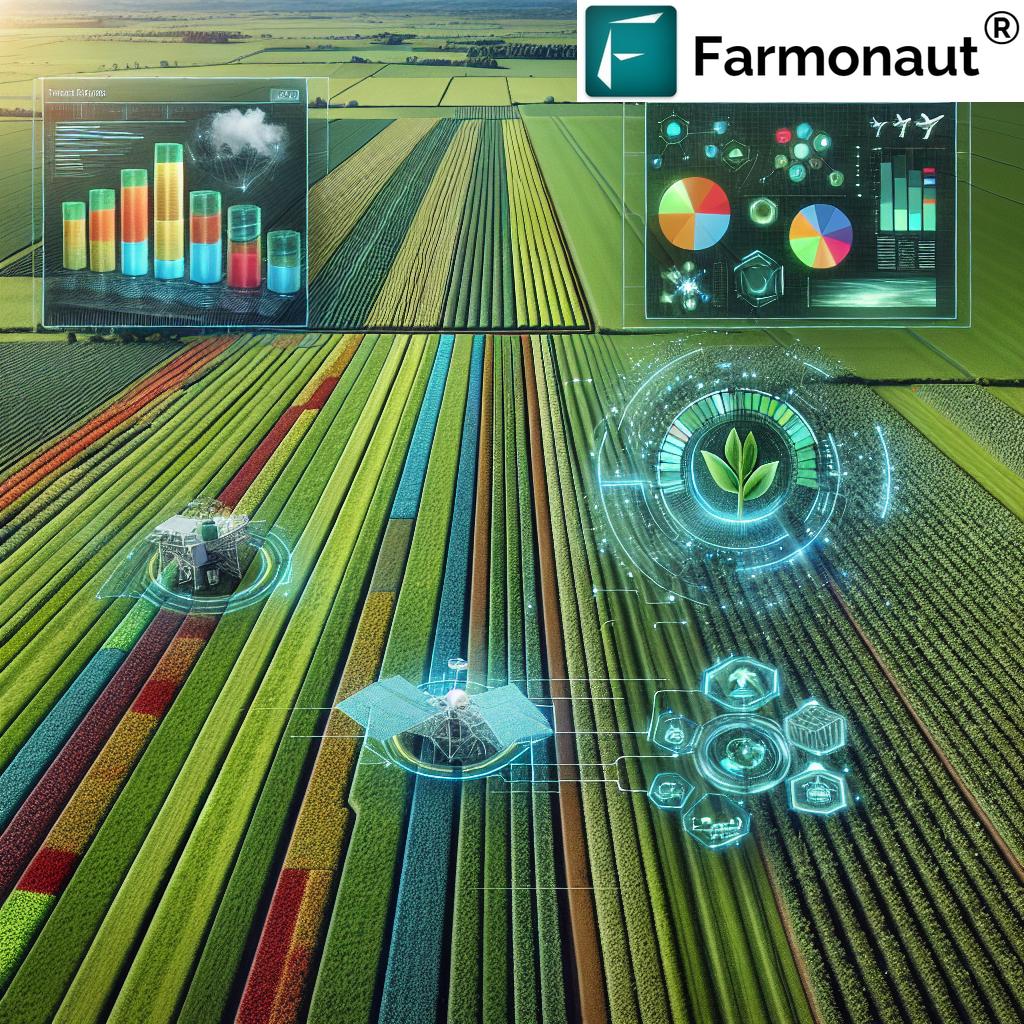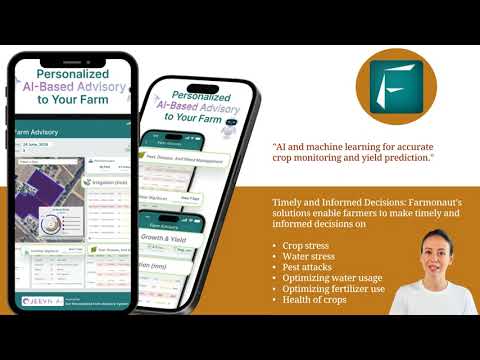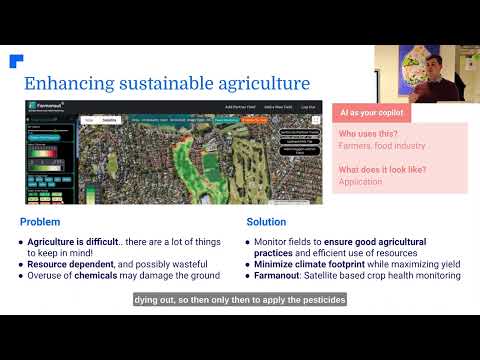Revolutionizing Agriculture: How Satellite Crop Monitoring and Machine Learning Are Transforming Precision Farming
“Satellite crop monitoring can analyze up to 500,000 acres of farmland per day, revolutionizing precision agriculture.”
In the ever-evolving landscape of agriculture, we find ourselves at the cusp of a technological revolution that promises to reshape the way we grow food and manage our precious natural resources. At the heart of this transformation lies the powerful combination of satellite crop monitoring and machine learning in agriculture, ushering in a new era of precision agriculture technology. Today, we’ll explore how these cutting-edge technologies are not only enhancing farm productivity but also paving the way for more sustainable farming practices.
The Dawn of Precision Agriculture
Precision agriculture technology has come a long way since its inception. What began as a novel concept has now blossomed into a suite of sophisticated tools that empower farmers to make data-driven decisions. At the forefront of this revolution is satellite crop monitoring, a technology that allows us to observe vast swathes of agricultural land from space, providing invaluable insights into crop health, soil conditions, and environmental factors.

But the true power of this technology is unleashed when combined with machine learning in agriculture. These advanced algorithms can process and analyze the enormous datasets generated by satellites, weather stations, and ground sensors, uncovering patterns and insights that would be impossible for humans to discern alone.
The Role of Satellite Imagery in Modern Farming
Agricultural remote sensing via satellites has revolutionized how we monitor and manage crops. These eyes in the sky provide us with a wealth of information, including:
- Vegetation indices like NDVI (Normalized Difference Vegetation Index)
- Soil moisture levels
- Crop stress indicators
- Early signs of pest infestations or diseases
By leveraging this data, farmers can implement targeted interventions, optimizing resource use and minimizing environmental impact. This is where Farmonaut’s innovative solutions come into play, offering farmers access to high-resolution satellite imagery and AI-powered insights through their user-friendly platform.
Machine Learning: The Brain Behind Smart Farming
Machine learning in agriculture is not just a buzzword; it’s the engine driving the next generation of farming innovations. These algorithms excel at:
- Pattern recognition in crop growth cycles
- Predictive modeling for yield estimation
- Anomaly detection for early warning systems
- Optimization of resource allocation
By training models on vast datasets of historical and real-time agricultural data, we can develop crop yield prediction models that are more accurate than ever before. These models take into account a myriad of factors, from weather patterns to soil composition, providing farmers with actionable insights to maximize their harvests.
Advanced Crop Monitoring Systems: A Closer Look
The integration of satellite technology and machine learning has given rise to advanced crop monitoring systems that offer unprecedented visibility into farm operations. These systems provide:
- Real-time crop health assessments
- Precision irrigation recommendations
- Targeted fertilizer application guidance
- Early detection of crop diseases
Farmonaut’s platform exemplifies the power of these systems, offering farmers a comprehensive suite of tools for monitoring and managing their crops with pinpoint accuracy.
Seed Quality Assessment: The Foundation of Successful Farming
One often overlooked aspect of precision agriculture is seed quality assessment. The quality of seeds plays a crucial role in determining crop yield and resilience. Machine learning algorithms are now being employed to analyze seed characteristics such as:
- Size and shape uniformity
- Germination rate prediction
- Genetic purity assessment
- Disease resistance markers
By leveraging these advanced techniques, farmers can ensure they’re starting with the best possible foundation for their crops, leading to improved yields and more robust plants.
“Machine learning algorithms in agriculture can process over 1 million satellite images annually for crop yield predictions.”
Sustainable Farming Practices Through Technology
As we face the challenges of climate change and resource scarcity, sustainable farming practices have never been more critical. Precision agriculture technology enables farmers to:
- Reduce water usage through targeted irrigation
- Minimize chemical inputs by applying fertilizers and pesticides only where needed
- Decrease soil erosion through improved land management
- Lower carbon emissions by optimizing machinery use
Farmonaut’s satellite-based solutions contribute significantly to these sustainability efforts by providing farmers with the data they need to make environmentally conscious decisions.
Explore Farmonaut’s Satellite API
Crop Nutrient Management: Precision in Feeding Plants
Crop nutrient management is a critical aspect of modern farming, and precision agriculture has revolutionized how we approach this task. By analyzing satellite imagery and soil data, machine learning models can create detailed nutrient maps of fields, allowing for:
- Variable-rate fertilizer application
- Identification of nutrient deficiencies
- Optimization of nutrient uptake
- Reduction in nutrient runoff and environmental impact
This level of precision ensures that crops receive exactly what they need, where they need it, leading to healthier plants and higher yields while minimizing waste and environmental impact.
Agtech Data Visualization: Making Sense of Complex Information
Agtech data visualization tools are essential for translating complex agricultural data into actionable insights. These tools allow farmers to:
- Visualize crop health across entire fields
- Track changes in soil moisture over time
- Identify problem areas quickly
- Make informed decisions based on clear, intuitive visuals
Farmonaut’s platform excels in this area, offering user-friendly interfaces that make it easy for farmers to interpret and act on the wealth of data at their fingertips.
Access Farmonaut’s API Developer Docs
Agricultural Image Processing: Unveiling the Invisible
Agricultural image processing techniques have advanced significantly, allowing us to extract valuable information from satellite and drone imagery. These methods can:
- Detect subtle changes in crop coloration indicative of stress
- Estimate crop biomass and yield potential
- Identify weed infestations
- Assess damage from natural disasters like wildfires
By applying machine learning algorithms to processed images, we can gain insights that were previously impossible to obtain, enabling more proactive and precise farm management.

Crop Health Monitoring: Early Detection, Better Protection
Crop health monitoring is perhaps one of the most valuable applications of precision agriculture technology. By continuously analyzing satellite data, we can:
- Detect early signs of crop stress
- Identify potential disease outbreaks before they spread
- Monitor the effectiveness of interventions
- Optimize harvesting times for maximum yield and quality
Farmonaut’s advanced crop monitoring systems provide farmers with real-time alerts and recommendations, enabling them to address issues promptly and protect their investments.
Soil Fertility Analysis: The Foundation of Healthy Crops
Soil fertility analysis has been transformed by the integration of satellite data and machine learning. These technologies allow us to:
- Create high-resolution soil maps
- Track changes in soil composition over time
- Predict nutrient depletion
- Recommend targeted soil amendments
By understanding the intricacies of soil health, farmers can make informed decisions about crop rotation, fertilization, and land management practices that promote long-term sustainability.
Agricultural Data Science: Driving Innovation in Farming
Agricultural data science is the backbone of precision farming, combining elements of statistics, computer science, and domain expertise to extract valuable insights from vast amounts of agricultural data. This interdisciplinary field enables:
- Development of predictive models for crop performance
- Optimization of farm operations through data-driven decision making
- Discovery of new correlations between environmental factors and crop outcomes
- Continuous improvement of farming practices through iterative analysis
Farmonaut’s commitment to agricultural data science is evident in their continuous refinement of algorithms and models, ensuring that farmers have access to the most accurate and up-to-date insights possible.
Precision Farming Techniques: A Toolbox for Modern Agriculture
Precision farming techniques encompass a wide range of technologies and practices designed to optimize agricultural production. Some key techniques include:
- Variable-rate technology for input application
- GPS-guided machinery for precise field operations
- Sensor networks for real-time monitoring of field conditions
- Automated irrigation systems responsive to crop needs
By adopting these techniques, farmers can significantly improve efficiency, reduce waste, and increase profitability while minimizing environmental impact.
Crop Disease Detection Algorithms: Protecting Harvests
Crop disease detection algorithms are becoming increasingly sophisticated, leveraging machine learning to identify potential threats before they become visible to the naked eye. These algorithms can:
- Analyze spectral signatures to detect early signs of infection
- Distinguish between different types of plant stress
- Predict the spread of diseases based on environmental conditions
- Recommend targeted treatment strategies
By integrating these algorithms into their platform, Farmonaut provides farmers with a powerful tool for protecting their crops and ensuring healthy yields.
Agricultural Data Cleaning Methods: Ensuring Accuracy
The quality of agricultural data is paramount to the success of precision farming initiatives. Agricultural data cleaning methods are essential for:
- Removing noise and outliers from sensor data
- Correcting for atmospheric interference in satellite imagery
- Standardizing data from diverse sources
- Filling in gaps in time-series data
Farmonaut’s commitment to data quality is evident in their rigorous data cleaning and validation processes, ensuring that farmers can trust the insights provided by their platform.
The Future of Agriculture: Data-Driven and Sustainable
As we look to the future, it’s clear that the integration of satellite crop monitoring and machine learning in agriculture will continue to drive innovation in the field. We can expect to see:
- Even more precise crop yield prediction models
- Advanced seed quality assessment techniques
- Improved crop nutrient management strategies
- More sophisticated agtech data visualization tools
With companies like Farmonaut leading the way, we’re poised to enter a new era of smart farming solutions that will help us meet the growing global demand for food while preserving our planet’s precious resources.
Precision Agriculture Technologies Comparison
| Technology | Data Resolution | Update Frequency | Cost-Effectiveness | Key Applications |
|---|---|---|---|---|
| Farmonaut Satellite System | 3m/pixel | Every 3-5 days | High (80% lower than drones) | Crop health monitoring, yield prediction, nutrient management |
| Drones | 1-5cm/pixel | On-demand | Medium | Detailed field mapping, crop scouting |
| Ground Sensors | Point-based | Continuous | Low for small areas | Soil moisture monitoring, weather data collection |
| Traditional Field Scouting | Variable | Weekly/Monthly | Low for small farms | Visual inspection, pest management |
Embracing the Agricultural Revolution
The convergence of satellite crop monitoring and machine learning in agriculture represents a paradigm shift in how we approach farming. By leveraging these technologies, we can create a more resilient, productive, and sustainable agricultural system that benefits farmers, consumers, and the planet alike.
Farmonaut’s innovative platform stands at the forefront of this revolution, offering farmers the tools they need to thrive in an increasingly complex and challenging environment. As we continue to push the boundaries of what’s possible in precision agriculture, we invite you to join us in shaping the future of farming.
Frequently Asked Questions
Q: How does satellite crop monitoring work?
A: Satellite crop monitoring uses multispectral imagery from satellites to analyze various aspects of crop health and field conditions. These images are processed using advanced algorithms to provide insights on vegetation health, soil moisture, and other critical metrics.
Q: What are the benefits of using machine learning in agriculture?
A: Machine learning in agriculture enables more accurate predictions of crop yields, early detection of diseases and pests, optimization of resource use, and personalized recommendations for farm management based on vast amounts of data analysis.
Q: How can precision agriculture technology improve sustainability?
A: Precision agriculture technology improves sustainability by enabling targeted application of resources like water and fertilizers, reducing waste and environmental impact. It also helps in conserving soil health and minimizing the use of pesticides through early detection of issues.
Q: What types of data are used in agricultural data analysis?
A: Agricultural data analysis incorporates various data types including satellite imagery, weather data, soil sensor readings, historical yield data, and information on farming practices. This diverse dataset allows for comprehensive insights into farm operations.
Q: How accurate are crop yield prediction models?
A: The accuracy of crop yield prediction models has significantly improved with the integration of machine learning and big data. While exact accuracy can vary, many models now achieve prediction accuracies of 85% or higher, depending on the crop and conditions.
As we conclude our exploration of how satellite crop monitoring and machine learning are transforming precision farming, it’s clear that we’re witnessing a technological revolution in agriculture. The integration of these advanced technologies is not just enhancing productivity; it’s paving the way for a more sustainable and resilient food production system.
We encourage you to embrace these innovations and consider how they can benefit your farming practices. Whether you’re a small-scale farmer or managing large agricultural operations, the insights provided by precision agriculture technology can help you make more informed decisions, optimize your resources, and ultimately, contribute to a more sustainable future for agriculture.
Stay curious, keep learning, and don’t hesitate to leverage the power of data and technology in your farming journey. The future of agriculture is here, and it’s more exciting than ever before.






